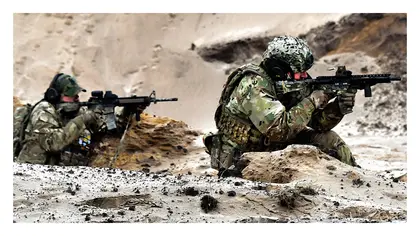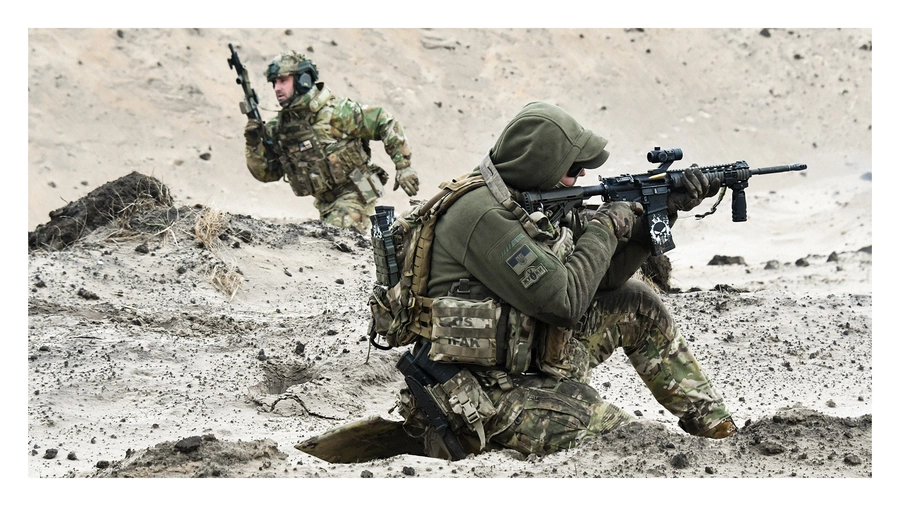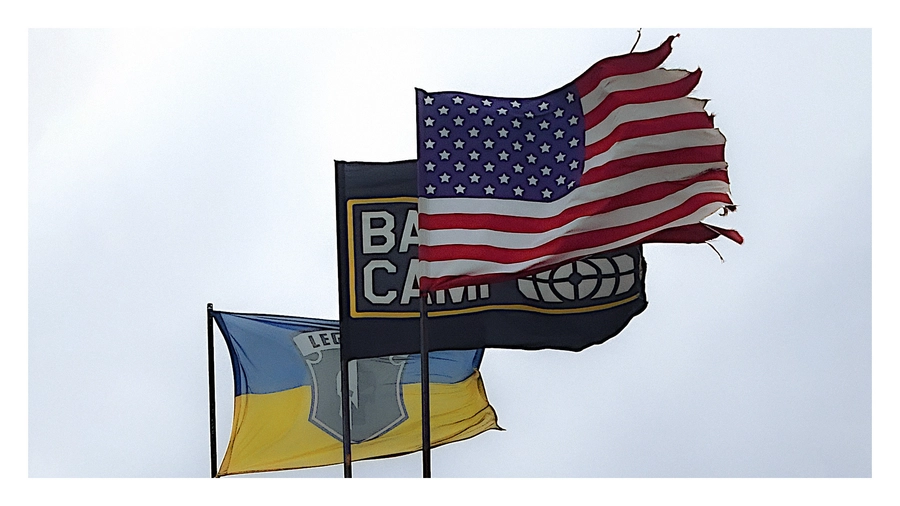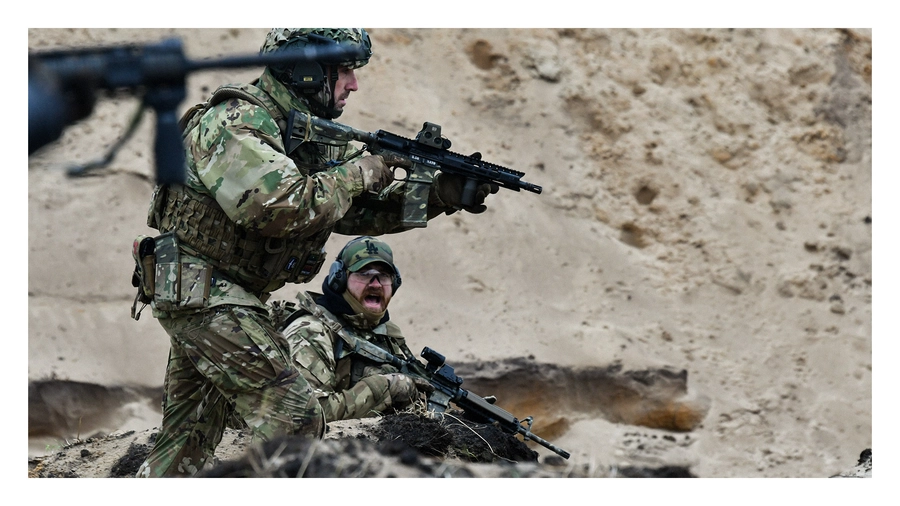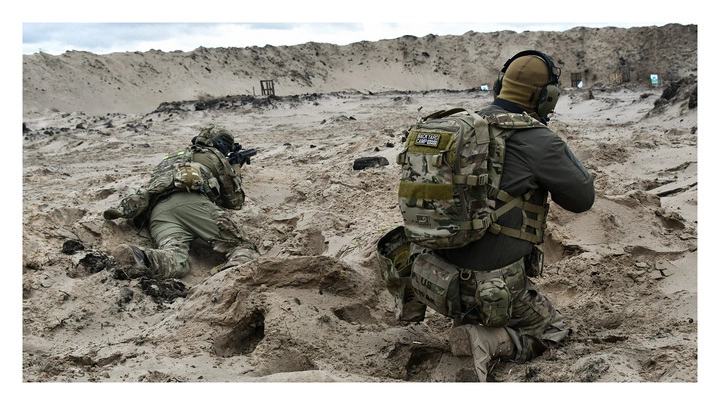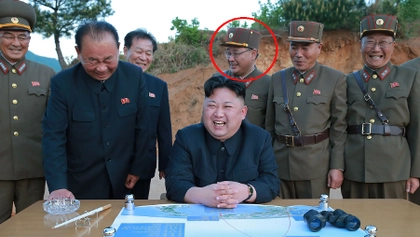Before the war, Kyiv resident Leonid Trytinichenko went out on weekends shooting with his local shotgun sport club because they were a great group of guys to spend time with, and blasting clay pigeons out of the sky was something he become pretty good at, and it was fun.
On a recent weekend, Trytinchenko was again at a shooting range, but instead of yelling “pull” and later debating lucky hits and the qualities of different shotgun manufacturers over a beer, he spent his day on his belly in cold sand, wearing body armor and a helmet, practicing fire and movement, while snapping off NATO-standard 5.56mm live rounds at a man-sized target.
JOIN US ON TELEGRAM
Follow our coverage of the war on the @Kyivpost_official.
“There is a war on, and this is a good way to spend time,” Trytinchenko said. “The skills they train us in here I hope I never have to use, but the Russians are still in our country. It makes lots of sense to do the practice now.”
Civilians practice fire and movement at a firing range outside Kyiv, Ukraine. Oct. 28 photo by Stefan Korshak.
Across Ukraine, as the war against Russia has dragged on, the firewall between civilian life and military service has eroded. Official numbers vary but according to most estimates about one million Ukrainians are either in uniform or employed in government agencies like health and emergency response directly supporting the war effort.
One out of ten Ukrainians have become refugees as a result of the full-scale Russian invasion, military-aged men are few and far between on city streets, and a work place where a co-worker has a relative either in uniform, wounded or killed, is not a rarity.
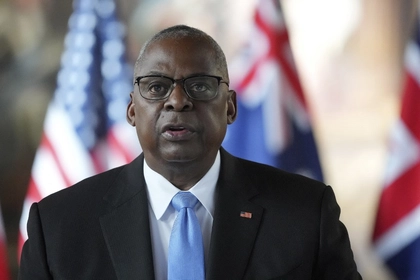
Pentagon Chief in Kyiv on Solidarity Visit
A Nov. 3 report by the Ukraine Business Survey estimates that around three out of four small businesses in Ukraine have returned to work. But even for Ukrainians with reliable incomes in the civilian sector, the war affects everything and everyone feels it. That has translated to Ukrainian citizens practicing military tactics on their own initiative and expense, in cities and towns across the country.
Dmitry Kichati is married and a long-time Kyiv resident. He runs a successful data processing business that has managed to continue working in spite of Russia’s invasion. He and his wife never moved from the Ukrainian capital even in late February and early March 2022, when Moscow’s armored columns were less than 10 kilometers from their home. Like most Kyiv residents in those days, he volunteered to help front line troops and prepared for local self-defense. When the Russian army retreated, he went back to work, but from time to time he has a weekend free.
“I’m here, in part because it’s just good practice, it’s exercise outdoors and it’s a great group of guys,” Kichati told Kyiv Post during a break in training.
29-year-old Kipchati has never served in the military and living in greater Kyiv, where military recruiting centers get enough volunteers to meet their quotas, he is unlikely to be conscripted under current Ukrainian mobilization law. With no end to the war in sight, he sees an armed populace ready to defend their homes if the Kremlin sends its troops again as being the only realistic way of protecting his home. Paying a bit for some basic military training just makes sense, he says.
“A citizen needs to be ready to fight. It’s a responsibility,” Kipchati said.
Flags fly in a stiff 50+ kph wind over Backyard Camp, a civilian-run military training area on the outskirts of Kyiv, Ukraine. Oct. 28 photo by Stefan Korshak
The training “base” on Kyiv’s outskirts, is called Backyard Camp. It started out in the early days of the war when an ad hoc group of locals got ready to help resist the Russian invasion by training recently-armed civilians. Volunteers have set up similar facilities across Ukraine funded by donations. The motivation seems to be, not just because the Ukrainian government lacks resources and trainers, but also because formally serving in the national guard or territorial defense requires registration with the government and a commitment to mandatory training.
Civilian-run training bases teaching basic marksmanship and infantry tactics, and ready to accommodate a civilian schedule, albeit with run by individuals with varying skills. can be found near most major Ukrainian cities. Kyiv Post has identified at least a half dozen sites scattered around the capital.
Artem Semko (a pseudonym), one of the camp’s founders, said that the facility has likely trained between fifty and a hundred people a month since March 2022. Most trainees, he said, live relatively close by and often work in IT. A few are active-duty military or police looking to hone their tactical skills. In their cases the training is free.
In present-day Ukraine, Semko said, the training isn’t just about defending one’s home, the skills taught are valuable in preparing men of military age for the day they may be called to join Ukraine’s Armed Forces (AFU), either as a volunteer or a conscript. Either way, practical infantry skills are worth knowing, he said.
IT businessmen Leonid Trytinichenko shouts an order during weekend tactical training outside Kyiv, Ukraine. Oct. 28 photo by Stefan Korshak.
AFU spokesmen starting with President Zelensky have repeatedly stated no unit goes into combat without serious preparation, but, eighteen months into the war claims often occur on videos and social media that Ukrainian soldiers are sent to the front line with little useful pre-combat training.
In some cases, according to reports from both Ukrainian service members and Ukrainian POWs, Ukrainian reservists are sometimes pressed into service with less than two weeks refresher training before being sent to a combat unit.
Some new conscripts receive a roughly a month of training, part of it on infantry tactics, from NATO instructors, mostly in training camps in Britain or Germany. That preparation has also seen criticism for placing too much emphasis on marching and military discipline, and too little on battlefield skills.
Across the AFU, particularly in veteran outfits, front-line soldiers say new soldiers no matter how they got to their unit most often are hit because they don’t understand, until they are first really shot at, how lethal ignoring basic survival rules like keeping one’s head down or looking at the terrain in advance to select areas that might offer protection.
One of the weekend trainers is Robert Clark (another pseudonym), a Californian. He told Kyiv Post that he was a former member of the US Special Forces (SF)and a veteran of combat in Afghanistan and Iraq. In that war, US SF on the ground, spent most of their time patrolling potentially hostile territory or raiding sites held by local resistance fighters, where ambushes and booby traps were the main threat.
The war in Ukraine for both its soldiers and their enemy is dramatically different. The main threat is from mortar rounds or artillery shells called in by a drone operator - but that doesn’t change the basics of soldiering, Clark says.
“You need to look at every bit of the ground, every little piece of it, and think every time you decide to change location,” he said. “Where do you want to go, how are you going to get there, who is going to give you covering fire when you make that move… the only way to do it right is practice.”
Civilians at a firing range outside Kyiv, Ukraine practice marksmanship. Oct. 28 photo by Stefan Korshak.
On the training ground trainees armed with M4-type rifles and at least three ammo mags line up in fire teams of two or three men, watched by Ukrainian and American instructors. They practice attacking and retreating across about 200 meters of a sand pit and despite the day being wet and viciously windy, only a few took a knee.
Most sprinted in NATO-standard 10–15-meter sprints, throwing themselves onto the sand into full-length firing positions to squeeze off a few shots before repeating the action. Section bosses yelled commands - over a sometimes, howling wind lashed by rain. Bullets punched holes into target boards. Some shots missed. A few men tripped, got up, and kept moving. Muzzle discipline (pointing down the range) was reasonably good.
Following the firing runs Clark gathered his civilian trainees, now wetter and dirtier, and talked them through what had happened, identifying key training points and highlighting errors and glitches that needed working on. He zeroed in on communicating with each other, situational awareness, and reading the ground.
Once he was happy that they’d got it, Clark then briefed them on the next drill.
You can also highlight the text and press Ctrl + Enter


